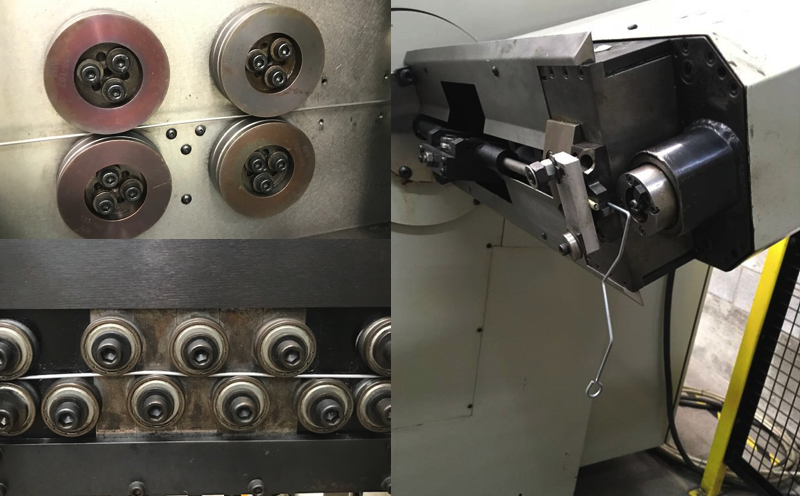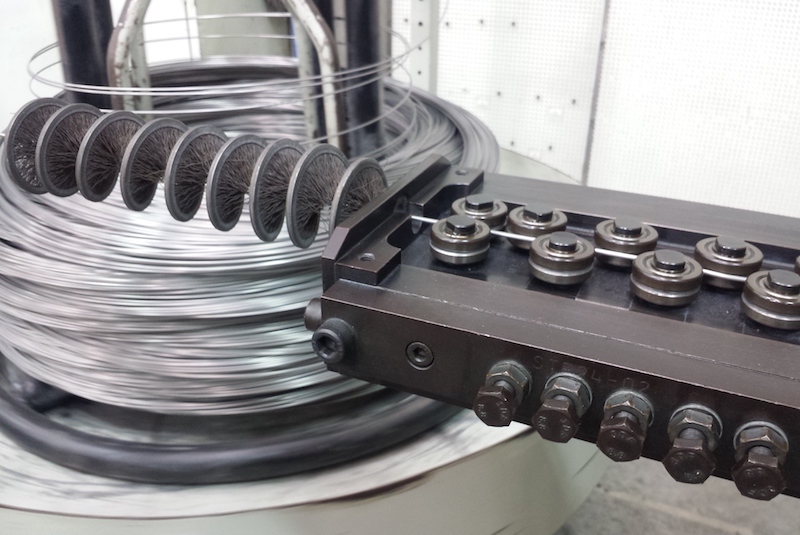What Is The Difference Between Wire Forming, Hand Bending, And Air Bending?
Many auto parts need wires that are bent into certain shapes. There’s an art to bending wire. The wire needs to be bent beyond its yield strength, but within its tensile strength. In other words, the wire needs to be bent to achieve the desired angle without breaking it or letting it rebound back to its original shape. There are several different ways to achieve this:
- Wire forming
- Hand bending
- Air bending
Let’s explore each option and discuss how these options differ from each other.
What Is Wire Forming?

Wire forming is a broad term that describes shaping wires into a specific configuration. For example, turning a piece of wire into a spring. This term is normally used to describe an automated wire forming process used by machines.
At Intran, we use CNC wire benders to bend wires up to 1 1/2” in diameter. Our use of these machines allows us to bend a large amount of wire in a short amount of time. Read on to learn how the CNC wire bending process works.
CNC bending stands for “computer numerical controlled” bending. It’s a unique process that uses the following parts:
- A computer
- A robotic arm
- Servo-driven rollers
The computer sends the specifications to the machine. Next, the robotic arm pushes the wire through the servo-driven rollers. This step bends the wire into preprogrammed configurations. This creates wires with the right shape and dimensions every time.
Wire forming is a versatile process. It can bend a wire in any direction: up, down, left, or right. It can bend a wire in pretty much any angle. It can even create coils out of wires.
What Is Hand Bending?
Hand bending is a manual wire forming process. It requires physical labor. The process works like this:
- The worker places a section of straight wire between a stationary pin and a roller pin.
- The diameter of the stationary pin is important because it determines the radius of the bend.
- By hand, the worker propels the roller pin around the circumference of the stationary pin. Since the wire is between both pins, the force bends the wire.
This is a pretty labor intensive process that’s only practical for small orders. It is not as precise as CNC wire forming, but also has less set up cost.
What Is Air Bending?
The air bending process is the similar to the hand bending process. The only difference is the roller pin is air powered. The process still involves a physical labor, but it is easier for the operator. Because the roller pin is air powered, an operator can form a larger diameter wire than they could with a purely manual process. Like hand bending, air bending is only practical for small orders.
The Main Differences Between These Methods

With all three methods, the idea is the same, which is to bend wires. Execution is quite different between wire forming and hand or air bending. Wire forming involves robotic arms and computers, making it more automated. Hand bending and air bending are much more manual processes.
Why Wire Forming Is The Best Method
Wire forming is a much better method than hand bending and air bending for mid to high volume production. It’s automated, and it doesn’t require any extra tooling. This means:
- Wire forming is quick and always produces precise bends. Each part takes less processing time.
- With enough volume to overcome set up costs, wire forming is cheaper than hand or air bending. You’ll save a lot of money by opting for wire forming.
- The quality is consistent. Since physical labor is heavily involved in hand bending and air bending, these methods are more prone to human error.
Wire forming requires more sophisticated equipment than hand bending and air bending. It’s important to find a good wire forming manufacturer that uses the latest equipment and technologies. At Intran, we offer wire forming services. Please contact us with any questions about our wire forming services.
